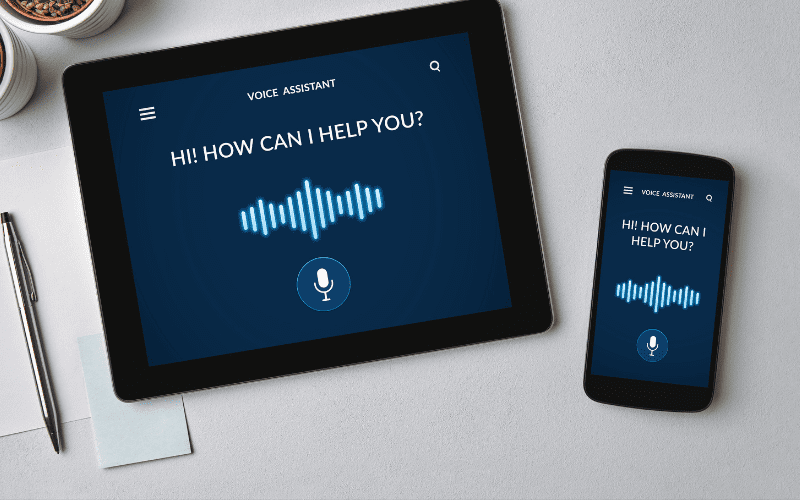Voice assistants have transformed the way people interact with smartphones. From setting reminders to answering questions or even controlling smart home devices, AI-powered voice technology has become a daily companion for millions. For developers, this shift has opened up exciting opportunities. But building one isn’t just about coding—it’s about creating an assistant that feels intelligent, intuitive, and reliable. That’s why today we’re diving deep into Developing an AI Voice Assistant for Android, guiding you through the process step by step.

Why Build an AI Voice Assistant for Android?
As a developer, you are well aware of the pain points of the current users: people desire to have access to information faster and hands-free, multitask more seamlessly, and need to be interacted with more personally. The small screen is not always convenient to type on, particularly when driving, cooking, or exercising. It is where AI voice assistants come in. When creating an AI voice assistant on Android, you are not only creating an app but resolving actual problems of users who desire to have one tool that should be efficient, accessible, and convenient.
Read More: Smartphone Myths You Should Stop Believing in 2025
Step 1: Setting Up the Development Environment
The right tools need to be in place before you dive into code. Android Studio is an IDE to choose when working on Android apps. You will also require access to the Speech-to-Text API and Text-to-Speech (TTS) engine of Google. These will enable your assistant to know what he can hear and react naturally. In the case of AI processing, you can combine frameworks such as TensorFlow Lite or you can make use of cloud-based NLP services such as Dialogflow which makes intent recognition and natural conversation handling simpler.
It might be quite a technical arrangement, though it is the basis of developing an AI voice assistant for Android that can actually perform in real-life scenarios. Your assistant can not effectively process speech without good APIs and frameworks.
Step 2: Enabling Speech Recognition
The capturing of user input is the first important element. In Android, the SpeechRecognizer class is inbuilt and thus it becomes less difficult to translate spoken words to text. Your attention at this stage is going to be on managing differences in accents, noises, and live transcription. A lot of the users are in various settings and it is important to make your assistant tune to eliminate noise and interpret various voices.
This is a solution to a fundamental problem as a developer: it is a pain that users have to repeat themselves a few times. Trust comes with accuracy and that is what makes users continue coming back to the app you have.
Step 3: Natural Language Processing (NLP)
Once you’ve captured spoken words, the next challenge is making sense of them. This is where NLP comes in. Tools like Dialogflow or TensorFlow Lite can help you classify user intent (e.g., “set an alarm” vs. “send a text”). Good NLP design allows your assistant to handle small talk, clarify ambiguous commands, and provide context-aware responses.
This stage highlights the heart of developing an AI voice assistant for Android—giving your app the ability to “think.” Without NLP, your assistant becomes nothing more than a voice-controlled search bar.
Read Also: How to Choose the Perfect Phone for Work and Business Use
Step 4: Generating Responses
Once you have fed your assistant, she should reply in a natural manner. Android has a Text-to-Speech engine making your program able to speak to the user. The voice pitch, speed and even third party voice libraries could be customized to make the interaction more realistic. It would be so much more comfortable when the assistant could talk in a better voice and with the tone that fits the personality of the app, it would allow users to feel that they are not only communicating with a machine.
Step 5: Continuous Learning and Integration
An excellent voice assistant is not plug and play. It adapts to the patterns of usage and enhances the accuracy and develops a wider knowledge base. Think about the inclusion of machine learning models that are dynamic. Moreover, consider tying your assistant to calendar applications, messaging apps, or even Internet of Things devices. The closer it becomes to actual life, the more it is necessary.
This is the place developers usually have trouble scaling and updating without putting it on your resources. The trick is to keep it simple (fundamental commands) and add on features as you get more users.
Conclusion
Developing an AI voice assistant for Android is more than just a technical project but also a problem-solving enterprise to the users. The trip involves coding, creativity, and empathy with the user, starting with the ability to use hands-free and ending with the possibility of creating trust through proper recognition and natural reactions. With the establishment of the suitable environment, speech recognition, the use of NLP, and responses that look human, you can generate a strong tool people will use every day.
Voice is one of the most natural interfaces to continue as smartphones develop. And in building now, you are not only keeping up, you are ahead.




